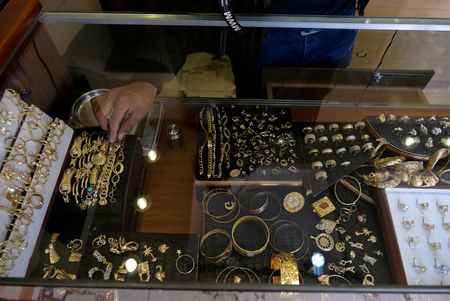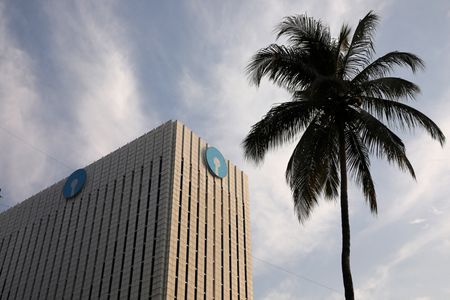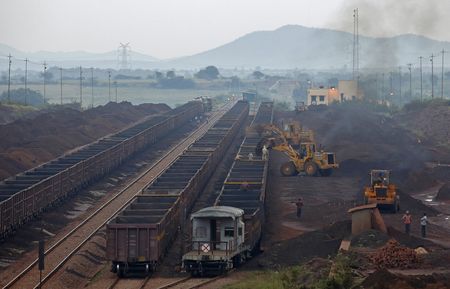By Georgina McCartney
HOUSTON (Reuters) -Oil prices were steady on Wednesday as investors weighed strong U.S. gasoline demand data and attacks on shipping in the Red Sea, while U.S. copper tariffs loomed.
Brent crude futures settled up 4 cents, or 0.06%, to $70.19 a barrel. U.S. West Texas Intermediate crude settled up 5 cents, or 0.07%, to $68.38 a barrel.
U.S. crude stocks rose while gasoline and distillate inventories fell last week, the Energy Information Administration said on Wednesday.
Crude inventories rose by 7.1 million barrels to 426 million barrels in the week ended July 4, the EIA said, compared with analysts’ expectations in a Reuters poll for a draw of 2.1 million barrels.
Gasoline demand rose 6% to 9.2 million barrels per day last week, the EIA said.
“Demand seems to be solid and not slowing down,” said Phil Flynn, senior market analyst with Price Futures Group.
After months of calm in the Red Sea, attacks in the major global shipping lane were renewed in the past week. Rescuers pulled six crew members alive from the Red Sea on Wednesday and 15 were still missing from the second of two ships sunk in recent days in attacks claimed by Yemen’s Iran-aligned Houthi militia after months of calm.
Oil prices were also supported by an EIA forecast on Tuesday that the U.S. will produce less oil in 2025 than previously expected, as declining prices have prompted U.S. producers to slow activity.
On Tuesday, U.S. President Donald Trump said he would impose a 50% tariff on copper, aiming to boost U.S. production of a metal critical to electric vehicles, military hardware, the power grid and many consumer goods.
Trump made the announcement as he delayed a deadline for some tariffs to August 1, spurring hopes among major trade partners that deals to ease duties could still be reached, though many remain uncertain.
Elsewhere, OPEC+ oil producers were set for another big output boost for September as they complete both the unwinding of voluntary production cuts by eight members, and the United Arab Emirates’ move to a larger quota, five sources said.
On Saturday, OPEC+ approved a supply increase of 548,000 barrels per day for August.
“Oil prices have stayed surprisingly resilient in the face of accelerated OPEC+ supply additions,” said Suvro Sarkar, energy sector team lead at DBS Bank.
UAE Energy Minister Suhail al-Mazrouei said on Wednesday that oil markets were absorbing OPEC+ production increases without building inventories, which means they are thirsty for more oil.
“You can see that even with the increases for several months we haven’t seen a major buildup in inventories, which means the market needed those barrels,” he said.
(Reporting by Georgina McCartney in Houston, Paul Carsten in London, Arathy Somasekhar in Houston and Trixie Yap in Singapore; Editing by Rachna Uppal, Bernadette Baum, Joe Bavier, Sharon Singleton, Paul Simao, David Gregorio and Rod Nickel)








